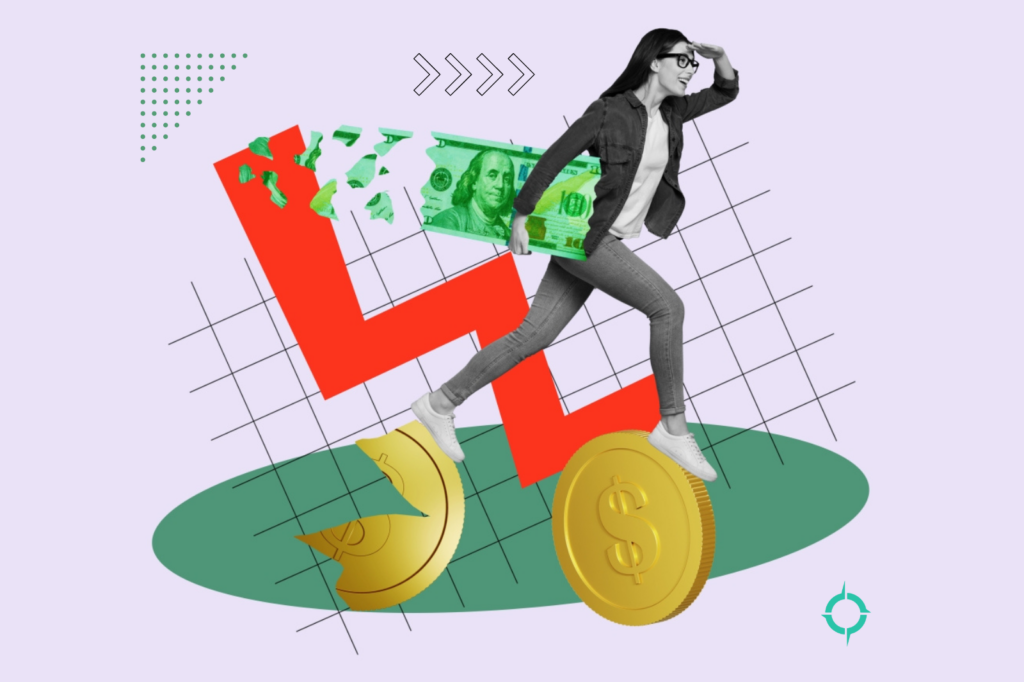Economic uncertainty is changing the way businesses approach their marketing strategies. It’s not just about lowering prices to attract customers, it’s about emphasizing value.
For both B2B and B2C companies, the key is to design campaigns that showcase the unique value of your products or services. Helping customers feel confident in their purchase decisions goes a long way to avoiding discounts and price cuts. Here’s how you can create value-driven campaigns that resonate with your audience, even when budgets are tight.
Focus on Demonstrating ROI for B2B Clients
B2B customers, especially in an uncertain economy, need to see how your product or service directly impacts their bottom line. It’s not enough to say your solution is great; you have to show it.
Businesses of all sizes are spending less in order to tightly manage costs. This makes sense. If sales are harder to come by and if profit margins are shrinking, the only way to get ahead is to tighten the purse strings.
In this environment, B2B marketing requires a greater emphasis on ROI. More specifically, your campaigns must emphasize how your product or solution can make them more money.
Here’s how to make your case:
Case Studies and Success Stories
A powerful tool in your toolbox are the past successes of your current clients. Showcasing real-world examples of how your solution has helped other companies can demonstrate tangible results.
Businesses today are desperately searching for increased revenue, cost savings, and time efficiencies. Develop storytelling that illustrates how other companies have experienced growth by using your service.
Lead Magnets
Too many B2B websites operate simply as brochures. While the messaging and onsite design may be on point, it’s not enough to inspire a prospect to convert. Lead magnets not only offer more ways to get people into the sales funnel, it also helps prospects discover the value of your products and services.
One example is an ROI calculator. Offering the lead magnet on your website or as part of a sales presentation can help potential clients see the financial benefits of working with you. It’s a way to visualize how your solution will pay off in the long run.
Another example is an interactive tool (usually a multi-step form) that answers a question they may have. Value calculators and efficiency estimators help curious site visitors answer bothersome problems that align with your unique value proposition. Bonus points if you require an email address to see the final results.
Webinars and Educational Content
Hosting webinars or creating content that educates potential clients on industry best practices can build trust and authority. They position your business as a subject matter expert, not just a vendor. The key with any Top of the Funnel (TOFU) content strategy is to subtly integrate how your product solves common pain points for businesses.
There is a time and resources investment for this type of rich content, no doubt, and the payoff may not seem readily available. The key is to map out a strategy that effortlessly guides people from the Top of the Funnel through to the Middle and Bottom of the Funnel. This helps B2B decision makers quickly explore your company’s value proposition and make a decision to connect.
The added benefit of webinars and education content: with SEO-optimized content, you can expand your reach to attract more potential customers who are struggling with the pain points your educational content explores. As search engines move to become “knowledge engines”, your content feeds the search engine results for inquiries related to your product or service.
Transparent Pricing with Value-Add Options
B2B buyers appreciate transparency. Instead of cutting prices, emphasize the long-term benefits of your service, like ongoing support, training, or customization options. This helps clients see why paying a premium for your solution makes sense.
Create Compelling Programs for B2C Customers
For B2C businesses, the challenge of an economic shift is about justifying the price of a product or service. Many consumers are financially strapped. Some are buying with credit, which further exacerbates their situation.
Under these circumstances, B2C marketing not only requires building demand, you also have to drive value. The more benefit you demonstrate to the consumer the less you have to resort to price cuts.
Here are strategies to keep customers buying:
Bundle Packages
Bundling products together achieves the same objective as point-of-sale marketing at a brick and mortar store. Your customer came to buy one thing. Just before purchase they discover more low-cost products to enhance the value of their shopping experience.
Creating bundles allows you to offer more value than an individual purchase. For example, a skincare brand could offer a package that includes a cleanser, toner, and moisturizer at a competitive price. Customers feel like they’re getting more for their money, and you increase your average order value.
Consumers are looking to get more for their dollar. Even though they’re restricting overall spending, they will spend more if they feel like a purchase offers more value. It’s up to marketers to determine how products (and even services!) can be bundled together to give the buyer a more rewarding offer.
Rewards Programs
During times when consumers are watching their spending, loyalty programs can provide an incentive to stick with your brand. Even higher income earners engage with loyalty programs (think mileage programs with airlines). It’s another example of driving value to overcome shifts in consumer spending.
You can move the needle during economic shifts by offering rewards like discounts on select products, exclusive access to new products, or points that customers can accumulate for future savings. Programs like these appeal to consumers’ need to feel appreciated while also encouraging repeat purchases. Who doesn’t enjoy being the first to know about an exclusive offer or a new product?
Developing a comprehensive rewards program is no easy task, but it’s worth it. It’s important to have a greater insight into customer purchasing habits and how you can trim more costs (or fees) everytime a buyer swipes their card. Here at Divining Point we have a trusted partner who can help you discover these insights. Contact us and we’ll get you set up.
Highlight Non-Monetary Value
Sometimes, the best way to justify a price isn’t through discounts but by emphasizing other benefits. Highlight your exceptional customer service, eco-friendly practices, or how your product saves time and effort.
For example, a grocery delivery service might stress the convenience and time-saving aspects of their service over the cost. Other examples are free shipping, logistical support, or additional services you can build into the sale. Every roadblock you remove from the path to purchase increases your chances of closing a sale.
Seasonal Promotions and Limited-Time Offers
Create urgency with promotions that feel like a limited-time opportunity. Using the perception of scarcity can fast-track the buying process. Buyers love deals during economic shifts. And since consumers are equally strapped for time, the urgency of a limited-time speeds up the decision making needed to complete a purchase.
A well-timed seasonal sale can attract budget-conscious customers without permanently lowering your price point. Add in bundle packages and rewards to maximize the overall value of the purchase.
How to Shift the Conversation from Price to Value
For both B2B and B2C businesses, the goal of marketing during an economic shift is to switch the conversation from “Why is this product expensive?” to “Why is this product worth it?”.
Since buyers of all types are looking to get more for less, your marketing strategy should incorporate more ways to drive home value.
Focus on Customer Pain Points
Speak directly to the challenges your audience is facing, and show how your solution alleviates those pain points. When you make the benefits crystal clear, customers are more likely to see the value in what you’re offering.
Leverage User-Generated Content (UGC)
Positive reviews, testimonials, and social media posts from happy customers can be powerful tools to demonstrate value. UGC helps potential customers trust that your product or service delivers on its promises, especially when they’re hesitant to spend.
Invest in High-Quality Content Marketing
Use blog posts, guides, and videos to educate customers on how to make the most of your product. This approach works well for both B2B and B2C, as it positions your brand as a helpful, authoritative source in your industry.
Offer More Without Cutting Price
In an economy where every dollar counts, businesses that can communicate value effectively will stand out.
By focusing on the overall value proposition rather than just the price, businesses can create compelling campaigns that resonate with cost-conscious customers. Demonstrating the unique benefits you bring to the table will help you connect with your audience and keep your brand thriving even during challenging times.
Divining Point has experienced multiple economic shifts. From the Housing Crisis to the Covid Pandemic, we’ve helped companies “roll with the punches” and still get ahead. Contact us to discuss your marketing strategy. We’ll work with you to meet the demands of your buyers without sacrificing your price point.

